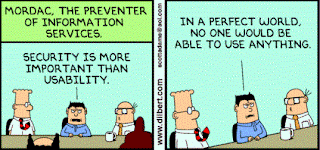How structure and communication influence
company culture.
Successful company
cultures
Developing excellent culture takes time. It takes a set of
values and leadership team to implement them. Zappos is a prime example. They
live by their 10 commandments and have the leadership that supports it. As a
summarized list, excellent culture is derived from:
-Focusing
on customer service
-Letting
the employees be heard (from ideas to questions to comments)
-Empowering
employee communication (upward, downward, and laterally)
-Adding
a little fun
-Empower
growth and learning
(form language lessons, in-building libraries, to training
seminars)
-Creating
a “family and friends” environment
-Fostering
a positive environment
-Embracing
change
(accepting and promoting change, while still reflective of the pace of its industry)
-Bringing
passions to work (passions for athletics, animals, running, and more)
-Staying
Humble
“It was pride that changed angels into devils; it
is humility that makes men as angels.” *Sourced
from brainyquote.com*
Necessities of
Culture
The above are dervied components of sucessful cultures, but there it takes more than just values to make a culture.
1. Live by your company values
“practice what you
preach”
2. Have the leadership
It starts at the
top. The rest play the game Follow-the-leader. (This will be touched on
more a little later)
3. Support with structure and communication
Leadership and company's values provide the base of company culture, but the company structure and communication methods have a strong influence on create and uphold company
values, but the company structure and communication methods have a strong influence
on the maintenance of company culture.
Structure and the Environment
Organizational communication speaks of businesses as a “system”.
Various theories relate this system to biology (general systems theory), an interaction
it’s components and it’s environment (open system), goal process (cybernetic
systems theory) or organizational chaos (new science system theory).
Looking at a business as an open system, we can analyze a
business structure and its relations to the business culture. First, let’s look
at an open system. An Open system looks
at the systems components (hierarchical ordering, interdependence, permeability),
system processes (inputs and outputs, feedback), system properties (holism,
equifinality, negative entropy, requisite variety), as well as the environment.
Now think about how the components of an organizational structure
can impact corporate culture. Centralized vs. decentralized (hierarchical ordering).
Silos vs. cross-functionalism (interdependence). Security, office technology,
and flow of information (permeability). Just-in-time vs. six sigma quality vs. EDLP (every day low
price) (process inputs/outputs). Key performance indicators (KPIs) vs
360-degree evaluations (feedback). Cubicles vs. open spaces (internal
environment). Reaction to industry influences, competition, and PR (external
environment). These are just a few.
Some cultavate creativity, information sharing, socialness, empowerment. Other promote stress, individualism, superiority, and lack of collaboration.
They all have an effect on how employees interact, what they
perceive is important, how they are motivated, and how they value themselves
and their peers. It’s this perception and behavior that affects culture.
Reading between the
lines
Along with structure,
communication cultivates the culture of an organization. How individuals within
the organization communicate to each other and how upper management
communicates to all, has a strong influence. Let’s look at two examples.
1. From: Communication Department
To: All employees
“Message from the CEO: Thursday at noon, all employees are mandated to
be present for an All Hands Meeting.”
(Formal, authoritative, neutral/negative
tone)
2. From: Communication Department
To:
All Employees
“To All Employees: Thursday at noon
will be our quarterly All Hands Meeting. Come with your questions, accomplishments,
and comments. The CEO will be speaking and is looking forward to your presence.”
(Less formal, informative, positive, ritualistic,
collaborative)
The style of the message will result in a similar type of
culture. The first will foster rigid, authoritative, formal, negatively
motivating culture. The second, a less formal, positive, and collaborative culture.
This is true of corporate messages, as well as supervisor-to-employee messages.
1. Supervisor: “Robert, Get me that report by
Friday. Don’t waste time.”
2. Supervisor:
“Robert, Send me the report by Friday. Time is of the essences as we push to
get this project out by the end of the quarter.”
Both
convey a sense of urgency, but things like tone and formality have an impact on
the employees, which in-turn will affect their interactions within the
corporation, and in-turn the culture.
Communication via
actions
Some things don’t need to be said. A simple act can have as strong of an impact as a written or verbal massage. Take for instance
the Google Founders, who have been known to hop around Google’s campus on pogo
sticks. It sends the message that having a little fun is OK. In contrast, look at HP’s former CEO who
resigned from his position after sexual harassment controversy. This sends
mixed signals. Actions like these make employees question the trust in their
leadership, the company, and their future. The culture begins to reflect this
distrust and uncertainty.
In a nutshell
If the values are in-place, leadership has something to
follow. If the leadership team follows and supports the values, the employees
understand their expected behavior. If the corporate structure and communication
supports the desired behaviors, then the desired culture will foster. They are all interdependent. If they don’t work together, something fails, and a company’s
culture becomes more like the Dilbert comic below. Have the values, have the leadership, have the structure, and have the communication methods to uphold the culture you
desire. Don't be a Dilbert comic.
 *sourced from http://dilbert.com/
*sourced from http://dilbert.com/









